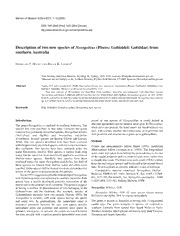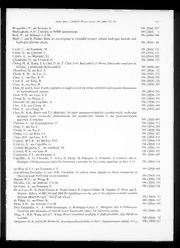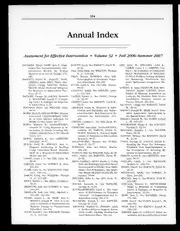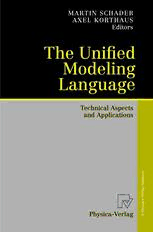
The Unified Modeling Language: Technical Aspects and Applications PDF
Preview The Unified Modeling Language: Technical Aspects and Applications
~. .• ~ ~or GROOM M. Schader . A. Korthaus Editors The Unified Modeling Language Technical Aspects and Applications With 108 Figures and 15 Tables Physica-Verlag A Springer-Verlag Company Prof. Dr. Martin Schader Dipl.-Wirtsch. Inf. Axel Korthaus Lehrstuhl fUr Wirtschaftsinformatik III Universitiit Mannheim SchloB D-68131 Mannheim Germany ISBN 978-3-7908-1105-6 Cataloging-in-Publication Data applied for Die Deutsche Bibliothek -ClP-Einheitsaufnahme The unified modeling language: technical aspects and applications; with 15 tables I M. Schader; A. Korthaus (ed.). -Heidelberg: Physica-VerI., 1998 ISBN 978-3-7908-1105-6 ISBN 978-3-642-48673-9 (eBook) DOl 10.1007/978-3-642-48673-9 This work is subject to copyright. All rights are reserved. whether the whole or part of the material is con cerned. specifically the rights of translation. reprinting. reuse of illustrations. recitation. broadcasting. reproduc tion on microfilm or in any other way. and storage in data banks. Duplication of this publication or parts there of is permiued only under the provisions of the German Copyright Law of September 9. 1965. in its current version. and permission for use must always be obtained from Physica-Verlag. Violations are liable for prosecu tion under the German Copyright Law. © Physica-Verlag Heidelberg 1998 The use of general descriptive names. registered names. trademarks. etc. in this publication does not imply. even in the absence of a specific statement. that such names are exempt from the relevant protective laws and regulations and therefore free for general use. Cover Design: Erich Kirchner. Heidelberg SPIN 10662121 88/2202-5 4 3 2 I 0 - Printed on acid-free paper Preface Most of the articles in this volume are revised versions of papers presented during the 1st GROOM-Workshop on the Unified Modeling Language (UML). GROOM (Grundlagen objektorientierter Modellierung) is a working group of the Gesellschaft fur Informatik (GI), the German Society of Computer Science. The workshop took place at the University of Mannheim (Germany) in October 1997; the local organizers were Martin Schader and Axel Korthaus, Department of Information Systems. The scientific program of the workshop included 21 talks, presented in German language on Friday, Oct. 10th, and Saturday, Oct. 11th, 1997. Researchers and practitioners interested in object-oriented software development, analysis and design of software systems, standardization efforts in the field of object technology, and particularly in the main topic of the workshop: ''Applications, State of the Art, and Evaluation of the Unified Modeling Language" had the opportunity to discuss recent developments and to establish cooperation in these fields. The workshop owed much to its sponsors and supporters - University of Mannheim - Faculty of Business Administration, University of Mannheim - Sun Microsystems GmbH - Apcon Professional Concepts GmbH. Their generous support is gratefully acknowledged. In the present proceedings volume, papers are presented in three chapters as follows. - UML vs. Other Approaches - Business Process Modeling and Applications - Technical Aspects and Concepts vi In the first place, we would like to thank the authors for their contributions which made the workshop and this volume a forum for exchanging new ideas. Also, we are very grateful to all colleagues who chaired sessions during the workshop. Especially, we are obliged to Christoph Tapper who helped in many ways. Finally, thanks are extended to Physica-Verlag, Heidelberg, for the excellent cooperation in publishing this volume. Mannheim, December 1997 Martin Schader Axel Korthaus Contents Part 1: UML vs. Other Approaches Exchange of UML-Models with EIAlCDIF R.G. Flatscher . . . . . . . . . .. ............... 3 Object-Oriented Modeling Languages: State of the Art and Open Research Questions U. Frank . ............. . . . . . . . 14 From a Semantically Irreducible Fonnulated Conceptual Schema to an UML Model L. Kern-Bausch, M. leckIe . . . . . . . . . . . . . . . . . . 32 On Mapping Between UML and Entity-Relationship Model y. Ou . . . . . . . . . . . . . . . . . . . . . ....... 45 Evaluation of Object-Oriented Modelling Languages: A Comparison Between OML and UML M. Prasse. . . . . . . . . . . . . . . . . . . . . . . . . . . . . 58 Part 2: Technical Aspects and Concepts A Critical Look upon UML 1.0 K. Bergner, A. Rausch, M. Sihling ........ 79 Systems, Views and Models of UML R. Breu, R. Grosu, F. Huber, B. Rumpe, W. Schwerin . . . . . . . . 93 On Constraints and Queries in UML M. GogoUa, M. Richters . 109 Modeling Java Threads in UML M. Schader, A. Korthaus . 122 Fonnal Definition of UML's Package Concept A. Schurr, A. Winter . . . . . . . . . 144 UMLscript: A Programming Language for Object-Oriented Design 1. Seemann, 1. W. von Gudenberg . . . . . . . . . . . . . 160 Ways of Handling and Interpreting Specialization in Object-Oriented Modeling S. Strahringer . . . . . . . . . . . . . . . 170 Reuse of Models and Diagrams of the UML and Implementation Concepts Regarding Dynamic Modeling W. Weber, P. Metz . . . . . . . . . . . . . . . . . . . . . .. 190 viii Part 3: Business Process Modeling and Applications Application of UML Within the Scope of New Telecommunication Architectures E. Holz ............ . 207 Using UML for Business Object Based Systems Modeling A. Korthaus . . . . . . . . . . . . . . . . . . . 220 System Development with V-Model and UML G. MuUer-Ettrich . . . . . . . . . . 238 Business Process Modeling with EPC and UML: Transformation or Integration? M. Nuttgens, T. Feld, V. Zimmermann. 250 Conventions for the Practical Use of UML A. Schroff, A. Teichrieb . . . . . . . . 262 Software Engineering Process with the UML M. Wolf, R. Burkhardt, I. Philippow . 271 Author and Subject Index . . . . . . . . 281 Part 1 UML vs. Other Approaches Exchange of UML-Models with EWCDIF R. G. Flatscher Abteilung fur Wirtschaftsinformatik, Wirtschaftsuniversitat Wien, A-I 090 Vienna, Austria Abstract: Exchanging UML model data among tools of different vendors will be done with the technological means developed for the EIAlCDIF interim standards. This paper gives an overview about the development and present state of EIAlCDIF, the meta metamodel underlying all of CDIF's metamodels, the proposed mapping of the UML meta-metamodel to the CDIF meta-metamodel as well as the officially submitted proposal for a CDIF UML-metamodel. 1 Introduction Rational's proposal to OMG's (Object Management Group) RFP (Request for Proposal) for OAD (Object Analysis and Design) contains a proposal to address the problem related to exchanging UML (Unified Modeling Language) model data among tools of different vendors. It is proposed that BIA's (Electronic Industries Association) CDIF (CASE Data Interchange Format) interim standards are employed for this purpose. In order to be able to allow for such a vendor independent exchange format for UML model data, Rational proposed a CDIF-compliant metamodel which is supposed to allow for transferring all UML semantics in a systematic and standardized way. 1 Where UML 1.1 has been officially adopted as an OMG standard on November 14th, 1997, work is still ongoing in the area of exchanging UML models. 2 EIA'S CASE Data Interchange Format In 1987 the "CASE Data Interchange Format" (CDIF) committee was founded within the American Electronic Industries Association (BIA) to create a set of standards allowing the interchange of model data among the CASE tools of (different) vendors. The CDIF committee approached its goal by systematically devising a meta metamodel first and thereafter defining metamodels according to the expressivenes layed out in its meta-metamodel. It took until 1994 before the framework got stabilized in such a manner that CDIF metamodels representing the semantics of the different modeling methodologies could be finalized and presented as CDIF interim standards. lef. UML Interchange Fonnat (1997) and UML M3 (1997) as presented to OMG as part of the initial UML proposal in January 1997. M. Schader et al. (eds.), The Unified Modeling Language © Physica-Verlag Heidelberg 1998 4 CDIFName abbrev. status Foundation FND standard Common CMM standard Data Modeling DMOD standard Data Flow Modeling DFM standard Presentation Location and Connectivity PLAC standard Data Definition DDEF final draft State Event Modeling STEV final draft Business Process Modeling BPM draft Computer Aided Control Systems Design CACSD draft Expression EXPR draft Object-Oriented Analysis and Design OOAD draft Physical (Object) Relational Database paRD draft Project Management Planning and Scheduling PMPS draft Table 1: The CDIF Metamodels. An overview of the CDIF architecture can be found on CDIF's website (cf. CDIF W3 (1997)), in Ernst (1997a) or in Flatscher (1996). The standardized CDIF metamodels as of the end of 1997 are given in Table 1. EINCDIF has been co-operating and working with a number of standardization bodies like OMG, ECMA TC33:PCTE, ISO IRDS, ANSI X3L8 (data repre sentation), ANSI X3H4 (open systems repository), IEEE P1175 (task force on professional computing tools). This work has been carried out with informal2 as well as formal co-operation. The most important work is doubtlessly the co-operation with ISOIIEC JTClI SC7IWG 11, which uses the EINCDIF interim standards to produce an interna tionalized ISO version ("ISO/CDIF") of it. 2.1 The CDIF Meta-Metamodel From 1987 to 1991 the COIF framework for exchanging CASE data independently of tool vendors had been developed, yielding the "Meta-Metamodel I" set of standards for ensuring the interchangeability of CASE data for tools adhering to these interim standards. Basically, the meta-metamodel defined an extended entity-relationship modeling (EERM) language which allowed for specializing Meta-Entity-Types. While work started on defining metamodels for exchanging model data for dif ferent modeling methodologies3 it became clear that the meta-metamodel had 2Usually infonnal co-operations exist in the fonn of COIF members working on other standard bodies, thereby transferring their COIF knowledge and interim standards with the knowledge of the EIAICOIF committee. 3 A set of concepts building a "COIF Metamodel" for a certain modeling methodology like for state-/event-models is called a "Subject Area" in tenns of COIF. Although COIF tries to
The list of books you might like

The 48 Laws of Power

As Good as Dead

Better Than the Movies

Can’t Hurt Me: Master Your Mind and Defy the Odds
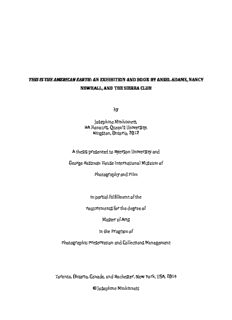
THIS IS THE AMERICAN EARTH
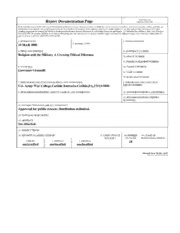
DTIC ADA448671: Religion and the Military: A Growing Ethical Dilemma
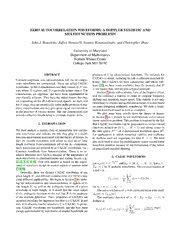
DTIC ADA476425: Zero Autocorrelation Waveforms: A Doppler Statistic and Multifunction Problems
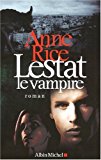
Chroniques des vampires - Tome 2 - Lestat le Vampire
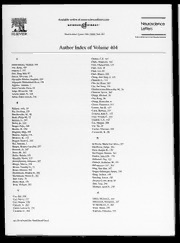
Neuroscience Letters 2006: Vol 404 Index

Statutes of the Province of Ontario 2006 pt. 3

Convergent close-coupling calculations of two-photon double ionization of helium
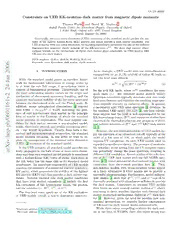
Constraints on UED KK-neutrino dark matter from magnetic dipole moments
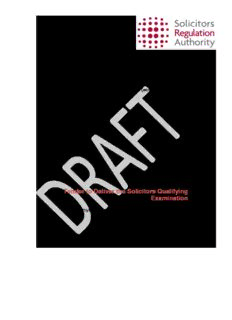
SQE Services Agreement

Snow White Must Die

Model Theory, Algebra, and Geometry
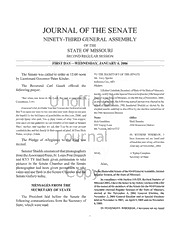
Missouri Senate Journals Compilation 2006

Molecular Biology of G-Protein-Coupled Receptors
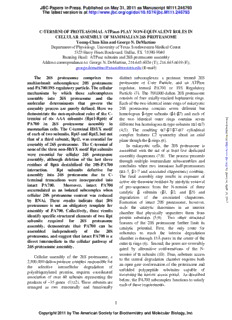
C-TERMINI OF PROTEASOMAL ATPases PLAY NON-EQUIVALENT ROLES IN CELLULAR ...
